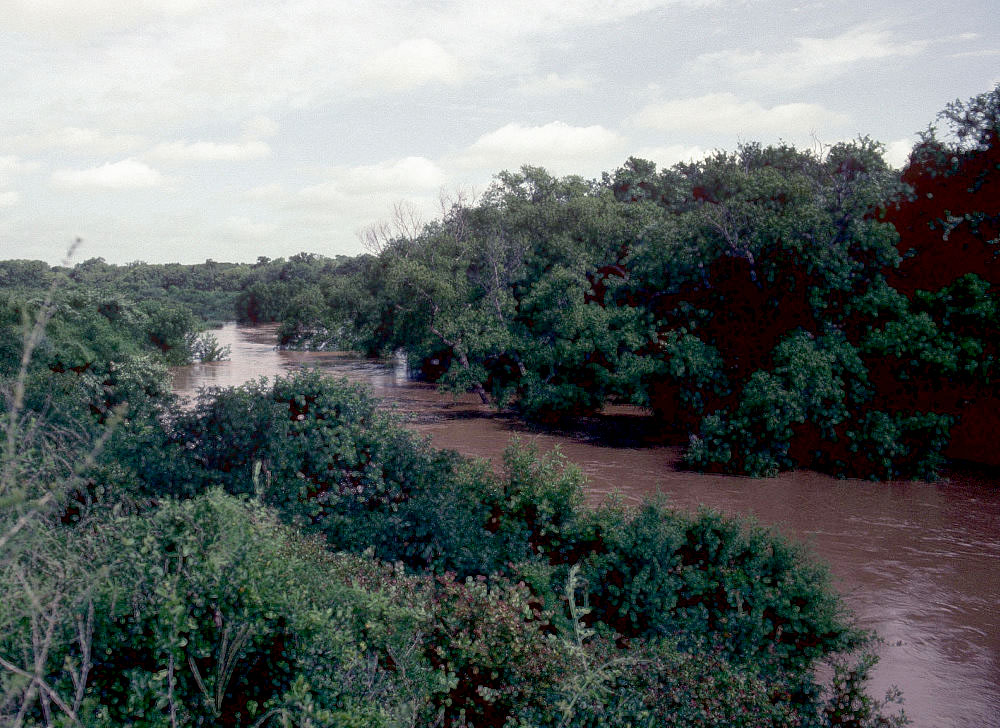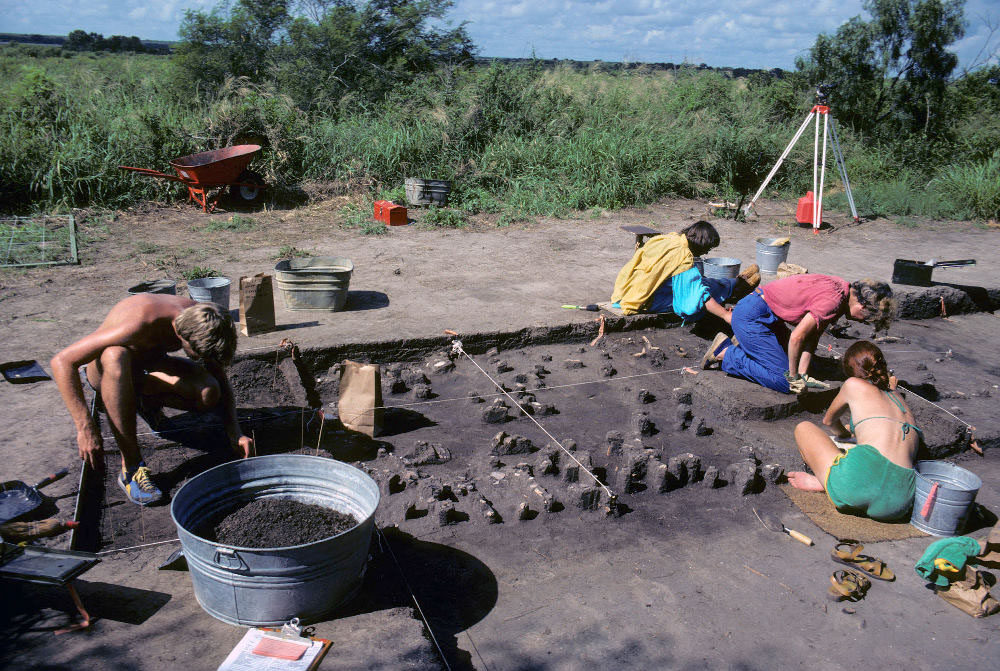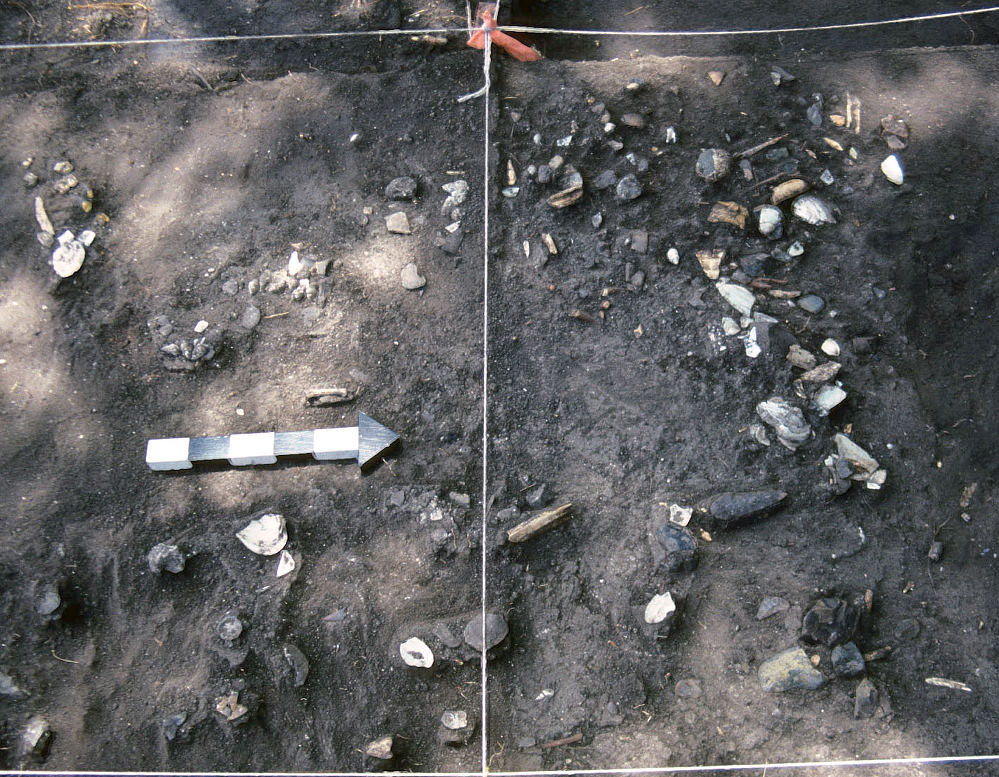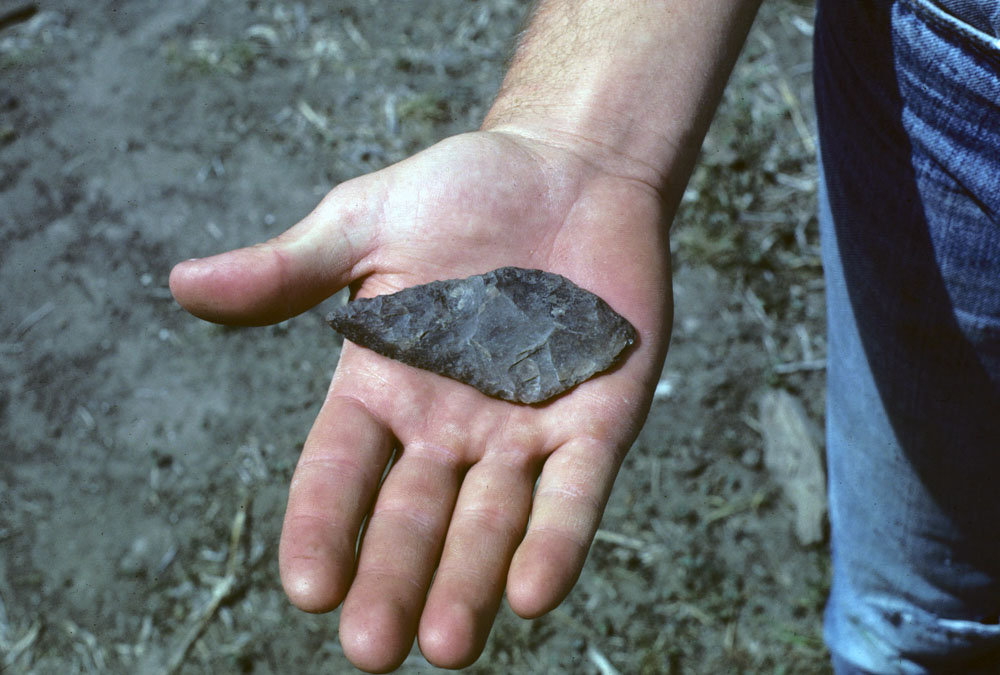Possum Hollow Site (41LK201)

Feature 5, a "hearth" that likely functioned as the heating element of an earth oven built around 600 B.C. (2,600 years ago) during the latter part of the Middle Archaic according to the prevailing chronology of the region. Charred wood from the feature was dated to 2450 +/- 60 radiocarbon years, which when calibrated is approximately 580-600 B.C. (An earlier calibration method was used in 1986, yielding a slightly younger estimated date of 480 B.C.) |

Anatomy of Feature 5. This annotated plan map drawn in the field and drafted by Kenneth M. Brown, shows the level of detail that archeologists were able to document from this well-preserved Middle Archaic feature. The intense burning suggests the fire upon which the rocks were placed to heat was quite hot, as might be expected from the building of an earth oven intended to bake plant foods, possibly roots, for 24 hours or more. From Highley 1986, Figure 5. Enlarge to see details. |

Stratigraphic drawing by Kenneth M. Brown showing the layering documented at LK201. The layering (stratigraphy) suggests that extensive deep excavations would have been able to separate Late and Middle occupations and events with far more precision than was possible at most Choke Canyon sites. Funding and scheduling did not allow large-scale excavation of the buried Archaic deposits. Nonetheless, the excavations were quite informative. From Highley 1966, Figure 16. Enlarge to see original figure caption. |
|
The Late Prehistoric component was a late Toyah horizon campsite dated by two radiocarbon assays to about A.D.1550, several hundred years after Toyah sites, such as Hinojosa, first appeared in the South Texas Plains. Possum Hollow yielded a wealth of Late Prehistoric artifacts including the classic Toyah chipped-stone tool kit (Perdiz, beveled knives, end scrapers, and flake drills) as well as tools made of bone and ground stone, bone and shell ornaments, and pottery. Over 1500 sherds of bone-tempered pottery were recovered, making the Possum Hollow sample one of the largest ceramic assemblages documented at any prehistoric site in the region. The pottery fragments represent approximately 20 vessels, several of which were later partially reconstructed. The faunal assemblage was extremely well preserved in the Toyah deposit and well preserved in all but the deepest Archaic deposits. Both Late Prehistoric and Archaic samples showed that a very broad range of animals were exploited, over 30 species, from large mammals to rodents, carnivores (bobcat, coyote, and raccoons), catfish, turkey, and turtles. Except for a single tooth found in the Archaic deposits, bison was only found in the Toyah deposit, where many bison bones were present. The faunal analysis, however, showed that deer was the main prey species even in late times. The second runner in the most-frequently-harvested animal category was the rabbit, both cottontail and jack rabbits. Ten species of rodents were identified. The faunal evidence also showed that spring was the main occupation period, but the site was occupied in other seasons as well. All in all, the Possum Hollow site was one of the most informative sites studied at Choke Canyon. In hindsight, much more could have been learned if funding and time had allowed truly large scale excavations, but that is true of many archeological sites. |
|





